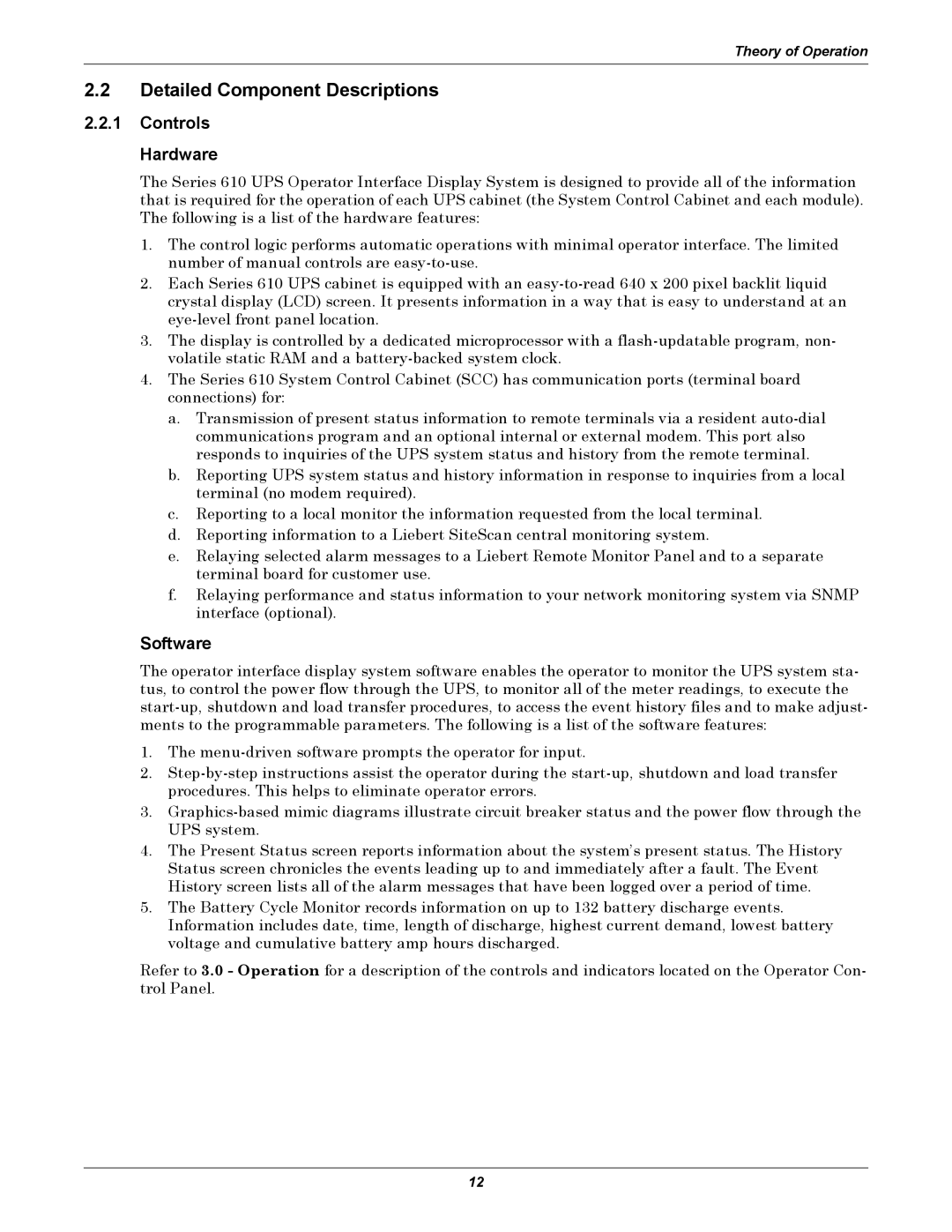
Theory of Operation
2.2Detailed Component Descriptions
2.2.1Controls Hardware
The Series 610 UPS Operator Interface Display System is designed to provide all of the information that is required for the operation of each UPS cabinet (the System Control Cabinet and each module). The following is a list of the hardware features:
1.The control logic performs automatic operations with minimal operator interface. The limited number of manual controls are
2.Each Series 610 UPS cabinet is equipped with an
3.The display is controlled by a dedicated microprocessor with a
4.The Series 610 System Control Cabinet (SCC) has communication ports (terminal board connections) for:
a.Transmission of present status information to remote terminals via a resident
b.Reporting UPS system status and history information in response to inquiries from a local terminal (no modem required).
c.Reporting to a local monitor the information requested from the local terminal.
d.Reporting information to a Liebert SiteScan central monitoring system.
e.Relaying selected alarm messages to a Liebert Remote Monitor Panel and to a separate terminal board for customer use.
f.Relaying performance and status information to your network monitoring system via SNMP interface (optional).
Software
The operator interface display system software enables the operator to monitor the UPS system sta- tus, to control the power flow through the UPS, to monitor all of the meter readings, to execute the
1.The
2.
3.
4.The Present Status screen reports information about the system’s present status. The History Status screen chronicles the events leading up to and immediately after a fault. The Event History screen lists all of the alarm messages that have been logged over a period of time.
5.The Battery Cycle Monitor records information on up to 132 battery discharge events. Information includes date, time, length of discharge, highest current demand, lowest battery voltage and cumulative battery amp hours discharged.
Refer to 3.0 - Operation for a description of the controls and indicators located on the Operator Con- trol Panel.
12
